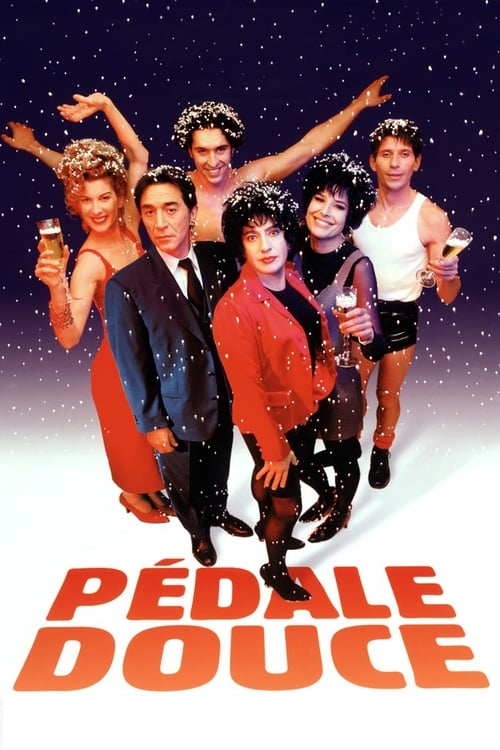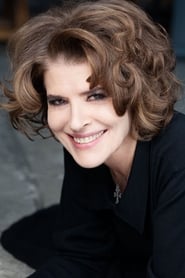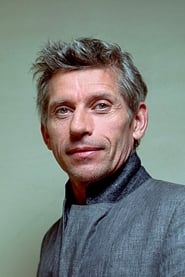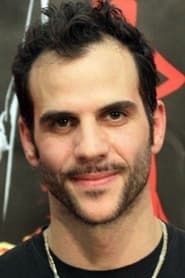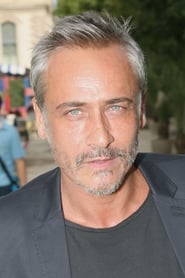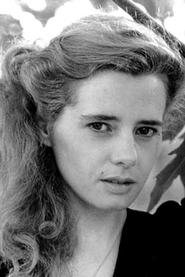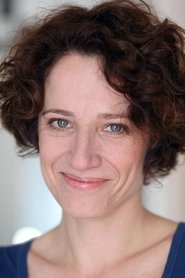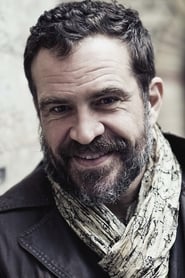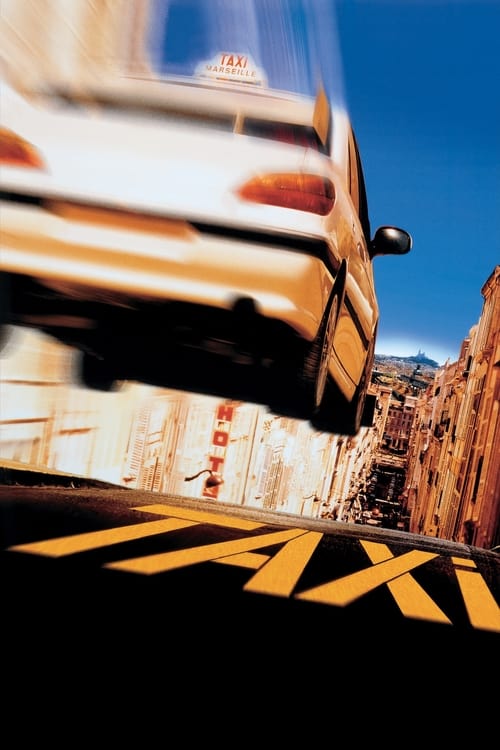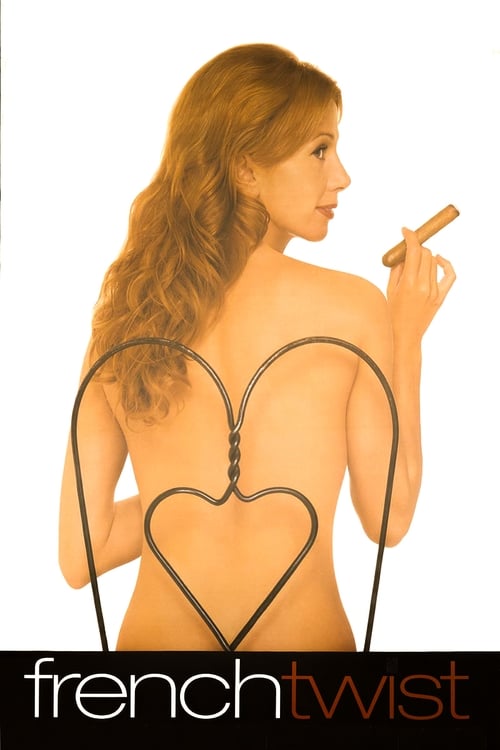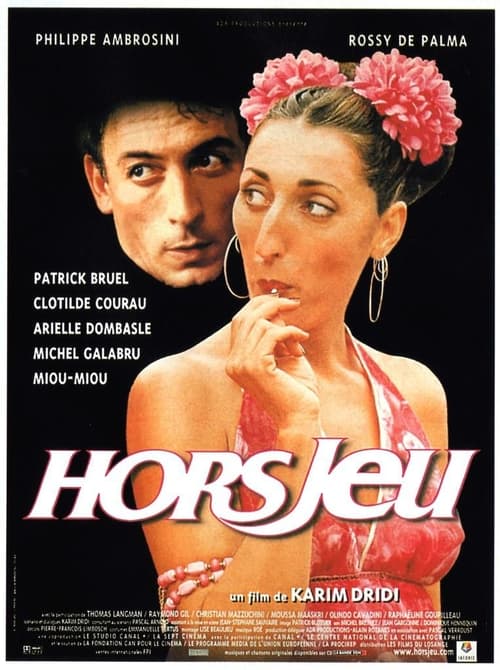
Ask Your Own Question
What is the plot?
In the heart of Paris, 1996, Adrien Aymar stands poised in the sleek, glass-walled conference room of his advertising agency, negotiating a critical business deal with Alexandre Hagutte, a powerful and conservative banker. The atmosphere is tense; Adrien, impeccably dressed and polished, must maintain the façade of a straight, successful businessman, though beneath this veneer lies a man grappling with his true identity. Alexandre, sharp-eyed and skeptical, probes Adrien with pointed questions, his manner laced with the unspoken judgment of a man from a rigid, traditional world. Adrien's voice is steady but guarded, revealing none of the turmoil within.
As the negotiation concludes, Adrien retreats to a sanctuary far removed from the corporate battlefield: Eva's gay bar and restaurant, a vibrant and colorful refuge in the Parisian night. Eva, whose full name is Evelyne but who is known simply as Eva, is the magnetic owner of this trendy establishment. She is a striking woman, her presence commanding yet warm, her eyes flickering with a mix of mischief and guarded emotion. Adrien greets her with a mixture of relief and affection, calling her "family" in a quiet moment that underscores the depth of their bond. Here, among the familiar faces of the staff and clientele, Adrien sheds the mask he wears by day and embraces his authentic self.
Eva listens intently as Adrien confides in her about the predicament he faces: Alexandre, the conservative client, is intent on meeting Adrien's "wife" to secure the business deal. The problem is clear--Adrien is openly gay in his private life but must maintain the illusion of a conventional marriage to appease Alexandre's prejudices. Eva, ever resourceful and loyal, offers a bold solution: she will pose as Adrien's wife. This plan, while risky, is a lifeline for Adrien's career and a testament to their friendship.
The next day, the scene shifts to a lavish dinner at Alexandre Hagutte's elegant home, where Eva arrives dressed impeccably, embodying the role of Adrien's wife with effortless grace. Alexandre is immediately captivated by her charm and sophistication, his conservative exterior cracking as he finds himself drawn to Eva in ways he did not anticipate. His wife, Marie Hagutte, watches the unfolding interactions with a mixture of suspicion and hurt, sensing the undercurrents of attraction between her husband and Eva.
Adrien, meanwhile, is caught in a maelstrom of conflicting emotions. He is grateful for Eva's help but increasingly jealous as Alexandre's attention shifts from him to Eva. The tension between Adrien and Eva surfaces in sharp, comedic exchanges. At one point, Adrien snaps, "You're stealing my client--and my life!" while Eva retorts with a sly smile, "Maybe it's time you shared a little."
As the days pass, the deception deepens. Alexandre's feelings for Eva grow more intense, leading to clandestine meetings and furtive glances. Adrien's professional and personal worlds collide, forcing him to confront the consequences of his double life. The façade begins to crumble when Alexandre discovers the truth about Adrien's sexuality and the ruse involving Eva. This revelation shakes Alexandre to his core, challenging his rigid beliefs and forcing him to reevaluate his relationships.
The climax unfolds in a dramatic confrontation at Eva's bar, where all the principal characters converge. Alexandre confronts Adrien and Eva, his voice thick with emotion: "Why did you lie to me? Who are you really?" Adrien responds with honesty, laying bare his fears and desires. Eva stands by him, her usual confidence tempered by vulnerability. Marie appears, adding to the intensity, demanding answers and asserting her place in Alexandre's life.
Despite the turmoil, the confrontation leads to a cathartic release. Alexandre admits his feelings for Eva but acknowledges the complexity of his marriage and his own prejudices. Adrien accepts that he cannot live a lie, and Eva encourages him to embrace his true self. The characters reach an uneasy but hopeful understanding, their relationships transformed by the honesty that finally breaks through the deceptions.
The film closes on a joyous note back at Eva's bar, where the vibrant gay community celebrates identity, friendship, and love. Adrien and Eva share a quiet moment, their friendship stronger than ever. Alexandre, now more open and softened, joins the gathering, signaling a tentative acceptance of change. The camera pulls back to reveal the lively, colorful scene--a testament to resilience and authenticity in a world that often demands conformity.
Throughout the film, no lives are lost; the story is a comedy that navigates social and romantic complexities without tragedy. The deaths are absent, replaced by emotional confrontations and revelations that drive the narrative forward. The final resolution is one of acceptance and renewal, with Adrien, Eva, and Alexandre each stepping into a more honest version of themselves as the Parisian night hums around them.
What is the ending?
In the ending of "What a Drag," the main character, a drag queen named "Mimi," faces a series of challenges that culminate in a dramatic performance. The film concludes with a celebration of self-acceptance and the importance of friendship, as Mimi embraces her identity and finds support from her friends.
As the final act unfolds, the scene opens in a vibrant nightclub, where the atmosphere is electric with anticipation. The audience buzzes with excitement, and the stage is set for Mimi's big performance. Mimi, dressed in an extravagant outfit that sparkles under the stage lights, stands backstage, her heart racing. She is filled with a mix of anxiety and determination, knowing that this moment is crucial not just for her career but for her personal journey of self-acceptance.
As she steps onto the stage, the crowd erupts in cheers, and Mimi's initial nerves begin to fade. She channels her emotions into her performance, singing with passion and energy. The camera captures her transformation from a hesitant performer to a confident star, showcasing her talent and charisma. The audience is captivated, and the energy in the room is palpable, reflecting the support and love that surrounds her.
Meanwhile, her friends, who have been her pillars of strength throughout the film, watch from the sidelines, their faces filled with pride and encouragement. They have witnessed Mimi's struggles and triumphs, and this moment represents not only her victory but also the power of their friendship. Each friend has their own journey, but they all converge in this moment of celebration, highlighting the theme of unity and acceptance.
As the performance reaches its climax, Mimi delivers a powerful final note, and the crowd erupts into applause. Tears of joy fill her eyes as she basks in the love and acceptance of her audience. This moment signifies her acceptance of herself and her identity, a culmination of the challenges she has faced throughout the film.
In the aftermath of the performance, the scene shifts to a celebratory gathering with her friends. They embrace Mimi, showering her with compliments and affirmations. Each character reflects on their own growth, with moments of laughter and camaraderie that reinforce the bonds they have formed. The film closes with a sense of hope and possibility, as Mimi and her friends look forward to the future, ready to face whatever challenges may come their way, united in their love and acceptance of one another.
In summary, the ending of "What a Drag" encapsulates the journey of self-discovery and the importance of friendship, leaving the audience with a sense of joy and empowerment as Mimi embraces her true self.
Is there a post-credit scene?
The movie "What a Drag," produced in 1996, does not feature a post-credit scene. The film concludes its narrative without any additional scenes or content after the credits roll. The story wraps up with the main characters having resolved their conflicts, and the ending provides a sense of closure without the need for further commentary or additional scenes.
What challenges does the main character face in the drag competition?
The main character, a drag performer named 'Diva', faces numerous challenges in the drag competition, including fierce competition from other talented performers, self-doubt about their abilities, and the pressure to maintain their persona while dealing with personal issues. As the competition progresses, Diva must confront their insecurities and the fear of not being accepted for who they truly are.
How does the relationship between Diva and their best friend evolve throughout the film?
Diva's relationship with their best friend, who initially supports them in their drag career, becomes strained as the competition intensifies. The friend feels overshadowed and begins to question their own identity and aspirations. This tension leads to emotional confrontations, where both characters must confront their fears and ultimately find a way to support each other despite their differences.
What role does the antagonist play in Diva's journey?
The antagonist, a rival drag performer, serves as a significant obstacle for Diva. This character embodies the cutthroat nature of the drag scene, constantly undermining Diva's confidence and attempting to sabotage their performances. The rivalry pushes Diva to dig deeper into their own artistry and resilience, ultimately leading to a transformative moment in their character arc.
What pivotal moment leads to Diva's self-acceptance?
A pivotal moment for Diva occurs during a particularly challenging performance where they decide to break away from their usual routine and embrace their true self. This performance, filled with raw emotion and authenticity, resonates with the audience and marks a turning point in Diva's journey towards self-acceptance. It is a moment of liberation that allows them to shed the fears of judgment and embrace their identity fully.
How does the film portray the theme of friendship through the character dynamics?
The film intricately weaves the theme of friendship through the dynamics between Diva and their circle of fellow performers. As they navigate the ups and downs of the drag competition, the support and camaraderie among the friends highlight the importance of loyalty and understanding. Moments of joy, conflict, and reconciliation showcase how their friendships are tested but ultimately strengthened through shared experiences and mutual growth.
Is this family friendly?
"What a Drag," produced in 1996, is a comedy that centers around themes of drag performance and self-discovery. While it has humorous elements, there are aspects that may not be suitable for all family audiences.
-
Drag Performances: The film features drag shows, which include exaggerated costumes and makeup. Some children or sensitive viewers may find the portrayal of gender roles and identities confusing or uncomfortable.
-
Mature Themes: The narrative touches on themes of identity, acceptance, and societal norms, which may require a level of maturity to fully understand and appreciate.
-
Language: There may be instances of mild profanity or suggestive language that could be inappropriate for younger audiences.
-
Romantic Situations: The film includes romantic subplots that may involve adult themes or innuendos that could be unsuitable for children.
-
Emotional Struggles: Characters experience personal conflicts and emotional struggles related to acceptance and self-worth, which could be upsetting for sensitive viewers.
Overall, while "What a Drag" has comedic elements, its themes and content may not be entirely family-friendly, particularly for younger children or those who are sensitive to discussions around gender and identity.

